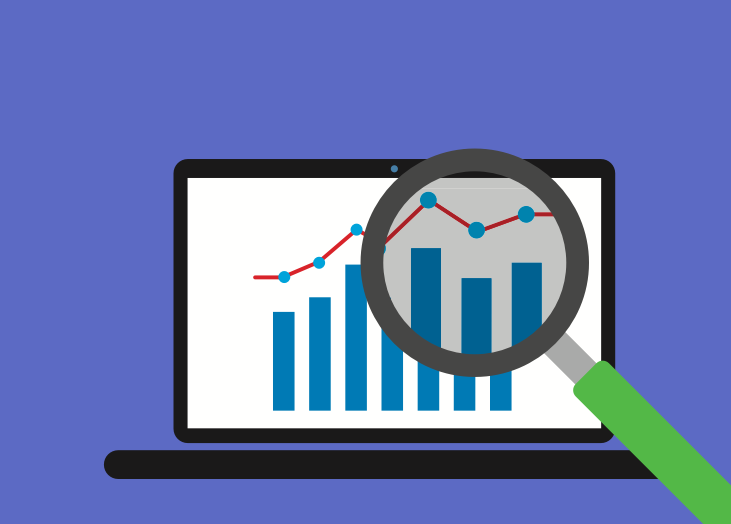They go by many names: Performance reviews, employee reviews, quarterly reviews, 1:1 meetings, personal reviews, employee assessments—the list goes on and on. Whichever name your organization uses ...
They go by many names: Performance reviews, employee reviews, quarterly reviews, 1:1 meetings, personal reviews, employee assessments—the list goes on and on. Whichever name your organization uses for them, odds are that performance reviews have long been a cornerstone of your employee performance management. However, employee review time can be a stressful experience for both employees and employers. Employees may be left wondering how their assessments work, while managers may have a difficult time providing objective and actionable feedback without it getting personal. Why are performance reviews so crucial for managing employees effectively and maximizing results? How can you improve the performance review process? Why are performance reviews valuable? When done right, employee performance reviews are a crucial tool for helping both employees and employers identify opportunities for improvement. For example, is there a particular performance metric that every employee is struggling to meet? That could be an indication of a systemic problem in the company or department. On the other hand, if one employee is consistently missing a performance goal that others are hitting, then they may just need some additional help or training to fix a specific issue that they’re having. In short, employee reviews are an invaluable tool for identifying opportunities for improvement. When done well, a performance review can give your employees the tools they need to better themselves—and provide some motivation to do so. However, when employee reviews are not done well, they can easily become a source of dread for employees. Poorly-handled quarterly reviews can feel unfair to employees and even lead to active disengagement amongst the workforce. 5 best practices for conducting more efficient and effective performance reviews To avoid the potential pitfalls of a poor performance review process, it’s important to follow a few best practices. Here are a few performance review tips to help you conduct better reviews with your own employees: 1. Apply a consistent performance review template for ALL employees in a department The perception of fairness is paramount for an effective performance review process. To help ensure fairness, it’s important to have a consistent performance review template and criteria for everyone in a given team or department—and to make sure everyone knows what they are! Creating a performance review template that applies the same criteria to every employee working the same role can help ensure that the process feels fair and consistent. However, it’s also important to make sure that the performance metrics you measure in that template are relevant to your employees and the work they do. 2. Try to highlight both achievements and areas for improvement Here’s a bit of advice from Forbes, “Don’t just list all the negatives and hope for improvement. It’s important to explain to the employee what they are doing right, as well as what facets they need to develop.” One common problem in the performance review process is that many reviewers focus primarily (or even solely) on what employees did wrong. While it is important to go over what each employee could do better, it’s just as important to celebrate their “wins” so they feel that their efforts are being recognized and rewarded. Recognizing major achievements and milestones is crucial for engaging employees and showing them what they need to keep doing—just as addressing flaws is important for improving performance. 3. When setting performance review goals, make sure they’re SMART Quarterly review criteria for employees need to be well-chosen. Asking employees to meet vague or irrelevant goals in the performance review can be extremely counterproductive—if the standards they’re being held to feel arbitrary or unfair, employees can quickly become disengaged with their work. In many cases, using a goal-setting framework like SMART can be incredibly beneficial. SMART is an acronym for: Specific. Goals should be clear and easy to understand while providing a clear course of action or a desirable result. Measurable. Goals should have an objective and easy-to-measure value to simplify tracking progress. Achievable. Goals should be aggressive, but achievable to keep employees motivated. Impossible goals can lead to employees giving up before they begin. Relevant. Goals should be related to an employee’s key role and responsibilities—it isn’t fair to hold software developers responsible for sales numbers or sales reps responsible for a product’s user experience. Time-Based. Goals should fall within a specific and realistic time frame that employees can work in. Ideally, the time allotted for a goal should be long enough to allow for progress towards the goal without being too short. For example, a sales team member might have a goal to close 20 deals per month or to make 40 sales calls in a day. The specific numbers here give the employee a specific goal to work towards in their sales activities, these goals can be easily measured, they are relatively simple to achieve, relevant to their primary job role (selling stuff), and have a set time frame to be achieved that isn’t so long that the goal becomes some distant concern. 4. Create a detailed performance improvement plan with specific steps It isn’t enough to tell a struggling employee to “just do better” when they fail to meet performance goals. If Bob from the service center knows he’s supposed to have an average time-to-resolution of five minutes for customer calls, but it takes him at least 10 for each call, he’s already aware that he needs to “do better.” It’s important to recognize the underlying issues that cause poor performance. For example, is Bob being tasked to address particularly complicated customer issues? Is he going above and beyond to provide a solution for customers that keeps them satisfied? Is the whole service department struggling to meet that five-minute goal (indicating that it needs to be revised)? Investigating the causes of poor performance may require more time and effort, but it will help produce better results and employee engagement. Giving employees a detailed performance improvement plan (PIP) or making necessary changes to company processes will do more to increase performance in the long term than simply telling people to do better without giving them a clear-cut way to do so. 5. Give employees a chance to provide their own feedback Performance reviews shouldn’t be a one-sided interaction. There may be issues that are keeping employees from realizing their full potential. However, without the ability to voice their concerns, employees may never bring these problems to your attention. If you don’t know about a systemic problem, then you can’t fix it! So, it’s important to provide employees with an opportunity to provide feedback about their work environment, challenges they face on the job, and more. It’s also important to enforce an expectation of honest and open communication because many employees may simply assume that their comments and concerns won’t really be addressed (or they may be punished somehow for sharing them), causing them to not provide feedback when given the chance. You can help encourage employees to provide feedback by actively showcasing examples of when feedback was used to make change within your organization, or to even provide completely anonymous feedback channels, like a suggestion box, and highlight the best suggestions from time to time without calling out any names (even if you have an inkling of who provided the feedback) or ridiculing the suggestion. If you act on these suggestions, it can go a long way towards building trust and engagement amongst your team! Transform your employee reviews with BrightGauge! So, how can you collect and organize the data you need to conduct efficient and effective performance reviews? Many business leaders choose to use specialized performance review software that helps them keep track of their employee performance metrics during their 1:1 meetings. One tool that many leaders use during their performance reviews is BrightGauge (specifically, the Dashboards feature). With BrightGauge’s reports and dashboards, managers can pull in data from their other performance management and monitoring tools such as ConnectWise, Autotask, QuickBooks, Customer Thermometer, and many others. All of this data can be put into a single convenient view that’s easy to reference during a performance review. Outside of performance reviews, the BrightGauge dashboard will update in real time so team leaders can actively monitor performance outside of their quarterly reviews and provide timely feedback—or recognize major achievements and milestones when they happen. Additionally, managers can make these dashboards visible to team members. This can help encourage some healthy competition between team members to see who can achieve the best scores for certain metrics. This keeps employees motivated to achieve goals and drives long-term results. Another useful feature of BrightGauge is our proprietary goals system. This tool makes it easy to set and track employee goals on an individual level—increasing accountability and helping employees know which areas they need to improve upon. This can be immensely useful for keeping employees on task and improving performance across the whole team. Are you ready to make your performance reviews more productive? Learn more about how BrightGauge can help you improve your employee performance review process today by scheduling a live one-on-one demo now!

We’re excited to welcome Max Cooper-Dowda to the team as a Customer Support Specialist! Join us in learning more about the newest member of our growing BrightGauge family. In the beginning Like many of us at BrightGauge, Max is a Floridian himself, having grown up in St. Petersburg, on the west coast of the state, where he stuck around and earned a degree from Eckerd College. Fun fact: Max has already been in the family, as he’s been a Tier 2 Support technician at ConnectWise for more than seven years now! As a tech for ConnectWise Manage specifically, Max has helped partners with setup questions and troubleshooting issues, and he was also tasked with writing documentation and conducting internal training. We’re thrilled that Max is bringing his knowledge and expertise to the BrightGauge team. Joining BrightGauge Max’s decision to join BrightGauge means our team can now offer even more support to our partners. For Max, he’s most excited about getting the opportunity to work in SQL and expand his knowledge of other programs and integrations outside of the PSA space. “I’m excited to join a small team and be able to share what I’ve learned over the past seven-plus years working on the ConnectWise support team,” says Max. Out of office Max is a self-proclaimed X-Men expert. If you have a free hour, he promises to tell you way more about the history of X-Men than any person should know! Outside of that, you can find Max playing video games (he collects and trades retro ones!), reading, playing board games, and watching bad movies. Max and his wife are also avid toy collectors, so make sure to ask him about the latest additions to his awesome collection!

When it comes to earning your client's business time and time again, the key is to build a relationship based on trust and transparency. Being proactive about showing your client the value you bring to the table rather than waiting for them to ask what you've been up to is a great way to earn a credible reputation. Our favorite way to practice this type of transparency is by getting in the habit of sending consistent and frequent client reports. Client reports show all of the "behind-the-scenes" work managed service provider (MSP) is working on that the client may not otherwise have visibility into. They essentially show the good, the bad, and the ugly and leave nothing to interpretation. One of the most powerful types of reports is the Quarterly Business Review (or QBR). You may always refer to this as a Business Review, but it's an in-depth meeting with a client where you may highlight the value of your services, review and reset goals, and create a strategy for moving forward. This month, we're sharing a comprehensive QBR Report template that you can recreate yourself and send off to your clients at whatever cadence makes the most sense for your relationship. This QBR Report includes ticket statistics, asset management details, and customer satisfaction metrics. Depending on what your client cares most about seeing, you could also add in gauges from your BDR, security, finance, or other tools. Quarterly Business Review Report - view here With BrightGauge, it's simple to create and send a report automatically on the date and time you choose. And by mapping your clients, you can save this report template and filter and share for specific clients when you're ready to send off (versus creating a new version of the report each time). This QBR Report can bring a lot of value to your clients and serve as a perfect conversation driver for talking through your business relationship. To recreate these dashboards for your own MSP, check out the links below: Public view link - Quarterly Business Review Report Buildout Key Instructions for Quarterly Business Review Report Please feel free to reach out to success@brightgauge.com with any questions you have!

This month's dashboard is all about the data you share with your executives. The MSP Overview dashboard is a typical board to share with your CEO or executive team in general. We were inspired by Kevin Nincehelser, VP of Managed Services at Premier One, an IT services company based in Kansas. With nearly 30 years of professional services under their belt, Kevin and the Premier One team are well-versed in the data points that a CEO of an MSP would take interest in. Because of how valuable the MSP Overview board has been, Kevin is happy to share his insights with other MSPs who may want to recreate it for their use. MSP Overview Dashboard - view here The MSP Overview dashboard gives a high-level view of the following important key performance indicators (KPIs): Number of endpoints and users managed Financial KPIs such as Profit Margin Percentage Revenue and cost breakdown for different services (such as project vs cloud vs product) Turning Point Gauge: shows when recurring revenue starts to exceed cost of goods sold and expenses Average Response and Resolution Time trends over the last 6 months This type of dashboard gives executives a quick, but thorough overview of KPIs that have an impact on the bottom line and can be used as a good jumping off point for aligning on future strategies and goals. To recreate these dashboards for your own teams, check out the links below: Public view link - MSP Overview Dashboard Buildout Key Instructions for MSP Overview Dashboard Please feel free to reach out to success@brightgauge.com with any questions you have!

In 1992, I was just a kid enjoying my summer in Miami, when all of a sudden we were facing a Category 5 hurricane. I remember that time quite vividly, but there are a few key things that stick out about living through Hurricane Andrew: The beautiful weather on August 23rd, making it hard to believe that a hurricane was actually about to hit The winds whipping through the house after all the windows shattered (and the crazy sounds that brought with it) The 17 days after August 24th when we were without power (in Miami's notoriously hot and humid climate) In 1992, staying connected meant something different than it does today. I was just a little girl, so I have no idea how companies picked up the pieces after Andrew completely destroyed our city. Now, it’s almost impossible to imagine being without power for 17 days and the catastrophic implications that would have on any business’s profit margins. Today, 28 years since Hurricane Andrew hit Miami and with hurricane season in full swing, it’s a good time to think about how you will prepare for and recover from a disaster. With a little work, you can ready your business and support clients who operate in affected areas. Put your business continuity plan to action If you've got a business continuity plan, now is the time to make sure you're ready to roll it out. If you haven't developed yours just yet, there are still ways you can prepare your business and customers to weather the storm, but you should make it a priority to create your ongoing plan. Have a communications plan. Make sure all of your employees and clients have updated their contact information so you know how to reach them. And let everybody know how they can reach you throughout the event and in its aftermath. If you’ve got a main phone number where you’ll be pushing out recorded messages with updates, make sure all your contacts are aware of that number and how often messages will be updated. Create “if/then” scenarios. If/then scenarios help manage both employee and customer expectations around when services or work will resume normal operations. For example, if one day after a hurricane makes landfall road conditions are safe, then clients can expect on-site visits within a week or as needed. Communicate these scenarios to anyone who is affected. Consider extending support hours. As long as it's safe to do so and you are capable of doing so, consider offering extra support before, during, and after a crisis. Your clients may have more concerns and questions than usual and could benefit from reaching you outside of normal hours. Not to mention, this is a powerful way to build up trust and loyalty amongst your clients. Protect your data You've been hearing about the cloud for so much time now, but natural disasters make a very powerful case for making the switch. There's no real reason to have your important data centers on-premise, as it is expensive and risky. And if you have clients who are in natural-disaster-prone regions, they really could benefit from cloud hosting. As a hurricane approaches, business owners and clients will be really worried about servers, devices, and data whether the office environment is remote or a hybrid. Every place of employment should have a standard process for how to secure devices when a storm is approaching. Living in Miami, this is a natural procedure in every place I've worked. If a storm is coming, we know what to do. Make sure your employees know what they have to do (either at home or in the office) and offer advice to your clients for doing the same. Finally, when it comes to backup and disaster recovery, take every opportunity you can as an MSP to shed light on how a BDR tool, like ConnectWise Recover, can be a game-changer in the event of a hurricane or other natural disaster. Without living through any major event, it may be hard for your clients to imagine why they would need to invest in a BDR tool. But, hit them with the truth. Remember, after Andrew we were without power for 17 days. If that happened to your client, everything they’ve worked so hard for could be lost. But a BDR can paint a vastly more optimistic picture as far as restoration efforts are concerned. Hurricanes are scary and nerve wracking, but they certainly don’t have to wipe out your business. A little preparation and the right tech stack can go a long way.

70+ Metrics for MSPs
Key metrics and accompanying formulas to help MSPs skyrocket growth and success!
Get your KPIs

Knowing where your company stands financially can give you a whole lot of insight into your business. It’ll tell you whether you’re profitable, whether you can hire additional resources, if you’re growing or not, which areas of your business you need to invest in, how much debt you are in, and so on. Obviously, this is incredibly important and useful data to know, and it’s not just about having the right numbers, but also interpreting those numbers in the right way. Every department in an organization is going to have a set of unique metrics that relate to their goals and efforts. We’ve recommended top key performance indicators (KPIs) for your Project Team, Service Team, and Sales Team. When it comes to your Finance Team KPIs, we believe there are four you should be keeping track of. Top Finance Team KPIs It’s true that our list of metrics to track is not a complete list. You’re going to want to have a holistic view of your finances, which may include several additional metrics other than the ones listed below. However, we think these four should never be left out. Cash in Bank This number quite simply tells you how much cash flow you have on hand. It’s important to know that because if you ever find yourself in an unexpected situation, you’ll know how to handle it without getting into deep financial trouble. Past Due Receivables Amount Accounts Receivable is an important one because it tells you how much payment you’re expecting to receive from clients within the next 30 days (or other given time period). Being aware of which accounts are past due will help you reconcile with your clients and ensure that you’re getting the payment you’re due for. Client Efficiency Index (CEI) The CEI is actually a metric that we created internally to give our teams an idea of overall company performance as it relates to each customer base. You can set an internal benchmark for your CEI (ours is 60%) and it will give you an idea of which customer accounts need to be addressed versus which are in your normal threshold. To calculate CEI, you’ll need to gather your total revenue by client, all direct costs (like licenses, software costs, etc), and your fully loaded labor cost per account. The formula for each client account is broken into two parts: (Total Revenue - Direct Costs - Fully Loaded Labor Cost) / Total Revenue = Gross Margin Per Client Gross Margin Per Client + 40% = CEI (adding 40 percentage points normalizes the metric to 100%) EBITDA You likely know this one, but this metric gives you a clear idea of your organization’s profitability and financial health. EBITDA stands for Earnings Before Interest, Taxes, Depreciation, and Amortization. Lots of companies use this metric to determine employee bonuses and raises for the year, so keep an eye on it. An easy way to view your metrics Wouldn’t it be great if you could have visibility into your financial picture at any given time instead of waiting for your accounting team to send you a report once a month? BrightGauge makes it really easy to do just that. Our software integrates with many popular tools on the market, like Quickbooks and Xero, and it pulls important data from those tools and puts it on a dashboard for everybody to see. Your dashboards are comprised of various gauges, so you have the freedom to create one dashboard that shows your cash flow, CEI, EBITDA, and any other metrics you care about. BrightGauge dashboards sync often, so you’ll be looking at real-time data anytime you glance at your screen. We like to recommend that you display your dashboards on flat TV screens around your office so that all employees have visibility into your key KPIs at all times. Other BrightGauge features include the ability to send custom, interactive reports to your clients or your internal teams as a way to build trust and transparency, and the functionality to set and track individual employee goals, which sets a precedent for accountability and motivation. If you’re ready to see how BrightGauge can help you run a better and more efficient business, schedule a live one-on-one demo today.

There’s a reason why automation is such a highly regarded business practice. It can save MSPs a ton of time and allow you to get back to revenue-generating tasks that will move your business forward. When you automate something like the generation and delivery of consistent KPI (key performance indicator) reports, it’s a win-win: you save time on a really important, but often tedious task and you build trust and transparency with your clients, which ultimately leads to repeat business. With BrightGauge, all integrations come with default report templates that are ready to customize and send out, or you can create your own templates and schedule them to send out on a recurring cadence based on your preferences. The set-up time is minimal and the pay-off can be really rewarding. We’ve had partners report that BrightGauge saves them 8-10 hours per week in comparison to using spreadsheets to generate KPI reports, which is really time-consuming and clunky at best. Just ahead, 5 BrightGauge reports that you can start using this week to save you hours and strengthen your transparency practices. Internal Weekly Service Report You may already be accustomed to holding a weekly service desk “stand-up” with your team, where you review the prior week’s numbers and see where adjustments are needed to get the team on an optimal track. It’s important to make sure your team or even individual techs are hitting goals for average response time, kill rate, SLAs, and so on, which are the KPIs that should be evaluated during the stand-up. An internal report highlighting these KPIs can reinforce what was discussed and serve as a visual reminder for what’s working and what isn’t. As a bonus, being able to refer to those reports over time can indicate trends and patterns that would be worth knowing about. Here’s an example of an Internal Weekly Service Report in BrightGauge that you can recreate yourself using this buildout key: Executive Summary Report (or End of Month report) This is a good report to share with key stakeholders and decision makers to show the value of what you’re doing and how you are helping clients remain successful. You should cover the KPIs that are most important to your client and give them a report that will take no more than a few minutes to look over, while still making a big impact. It’s up to you and your client to decide how often to send this type of report, but generally, at least once a month is a really good idea. Here’s a look at one End of Month report example that focuses on tickets, devices, and networks: To recreate this report for yourself, see this buildout key. Finance KPIs What business owner or manager is not interested in the health of their finances? Knowing crucial finance KPIs such as gross profit margin, monthly recurring revenue, cash on hand, and so on can help MSPs make informed business decisions that shape the future of their companies. An automated Finance KPI report makes it easy and a no-brainer to stay on top of those metrics and act upon them before they become an issue. You can present these Finance KPIs to your executive team in dashboard form, as shown below, or select “Convert to Report” from your dashboard menu to get it into a report format. See this buildout key to recreate these KPI gauges for yourself. Project Updates What’s the status of your active projects? How much time is spent completing those projects? What’s coming up in the next month or so? When it comes to keeping your clients informed on what’s going on with various projects, it makes sense to send a projects KPI report that shows metrics and data pertaining to the projects relating to that client. Your Project Management KPIs can be shared as a dashboard (read about sharing BrightGauge data here), or you can select “Convert to Report” from your dashboard menu to share it as a report. See this buildout key to recreate these KPI gauges for yourself. Sales KPIs This will likely be more internal than client-facing, but will be of equal interest to sales managers and internal stakeholders. Sales activities are a good predictor of future revenue and business performance, so it’s important to keep an eye on KPIs such as opportunities in the pipeline, deals won, and monthly recurring revenue. Again, feel free to share your Sales KPIs as a dashboard or convert it to a report if you prefer! Either way, here’s a buildout key to recreate these KPI gauges for yourself. See more dashboard and report examples here. To learn more about how BrightGauge dashboards and reports can save you hours each week and give you a better understanding of your data, contact us today and we’ll be happy to chat.

This month, we're stepping away from our regular dashboard of the month to share this awesome Engineer Audit Monthly Report. Luckily, your BrightGauge is flexible in that any of the gauges you see here can also be added to a dashboard, or converted to a number gauge and used to track your goals. All KPIs displayed: Hours Billable vs Total Member Scorecard - Last 6 Months Hours by Work Type Time Rounding CSAT 6 Months What is in the report On a recent account review call with our partners Cygnus Systems, I was amazed by some of the time tracking gauges their CEO Craig Isaacs shared. For this monthly report, we're given a summary of the team's performance over the last 6 months, and whether each metric is trending upwards or downwards. We especially love this Time Rounding gauge that highlights when team members might be over- or under-rounding for their timesheets, a common hallmark of those who don't enter their hours in a timely manner. This translates to keeping an eye on upping your Billable % for each team member. While it's a simple amount of gauges, this report gets the job done. When it comes to putting the numbers in front of your team, less (and what's actionable), is always more! How to recreate in your BrightGauge First, view the report here. Follow these modules here to recreate this report, or build any of the gauges found here, back in your BrightGauge account: Report Buildout Key For more examples of how BrightGauge works, check out our Templates as well as our Monthly User Showcase Webinars.

As many managed service providers (MSPs) are placing a heavy emphasis on customer retention in addition to customer acquisition, it’s becoming increasingly important to understand how to track and manage sales activities, opportunities, revenue, and more. Having a solid grasp on these activities can make a real difference in how efficiently your business is run because if these critical metrics fall through the cracks, it can have a negative impact on the business decisions you make, thus causing a ripple effect. The key is to hone in on a specific set of metrics and track them in real-time. Just ahead, we cover 7 key performance indicators (KPIs) you should be tracking and how you can automate the monitoring process. 7 Sales Activity KPIs to Track Net New MRR - the reigning champ of all sales metrics. This is one that every sales manager is sure to prioritize, as it is a valid indicator of how well (or not) your company is growing. Essentially, Net New MRR is the amount of monthly revenue generated by new customers and comparing this metric over time is essential in understanding your typical periods of high-profits versus churn, how your growth is trending, and how to plan and forecast your financial performance. Quotes Won - quite simply, this is a number that tells you how many quotes have been closed in any given time period (likely per month). It serves as a quick check-in to make sure sales performance is at an acceptable level. A number that is below your specific threshold can indicate that it’s time to dig deeper and find underlying causes for that level of performance. Percent Gross Margin - this may be the oldest KPI on the block, but it’ll never not be important, as it is another solid indicator of a company’s financial performance. It basically is a calculation of your total revenue minus your cost of goods sold (aka, Revenue - Expenses). The higher this number the better, as that shows you’re bringing in more than you’re spending - in other words, you’re making a higher profit on each dollar being spent to run your business. Top 10 Accounts by Revenue - which of your clients can you credit with bringing in your largest chunk of revenue? And why is it important to know this? Well, it is known that it is more economical to retain existing clients than to attract new ones. So, if you know who your top performers are, you’re going to want to focus on nurturing those accounts and making sure those clients have what they need to stick around for the long-term. Quotes Leaderboard - in this time of global unrest, remote work, and many “unknowns” it’s increasingly challenging and important to motivate and incentivize your team members. Leaderboards are an effective way to do this from afar because they rank performance for all to see. Creating a sales leaderboard based on who has closed the most quotes can inspire a little healthy and friendly competition between team members and can effectively keep motivation up. Reward your winner with an Amazon gift card or something simple. Profitability - the best way to track profitability is to understand how it fluctuates over time. What are the trends associated with this number? Are you generally becoming more profitable over time (awesome!) or are you wavering back and forth? When calculating this metric, you’re likely taking revenue, costs, and gross margin into account and comparing what they do over time. Understanding this will help you plan for the future. Count of Quotes Won - yes, we already covered this one, but here’s a different way to analyze this metric. Take a look at this number over time - for example, for each of the last 6 months - to understand when you’ve got momentum and what you can attribute to that momentum. You may notice trend lines that can drive your sales processes in the future. Automating KPI Tracking It’s easy to understand the need for and importance of tracking data, but doing so can be a full-time job in and of itself. This is why it pays to invest in a tech stack that works for you. Have reliable tools that support your business and can automate time-consuming, yet critical tasks for you. Any sales manager should be using a sales tool, like ConnectWise Sell, to manage quotes, proposals, contacts, opportunities won, and more. This is just an absolute must if you want to keep your sales processes and communications with prospects or partners organized. Because you’re likely be using several tools across your company (your accounting team may use Quickbooks, service team may use ConnectWise Automate, marketing might use SmileBack, etc), it also makes sense to bring in a tool that can consolidate all your data into one place, like BrightGauge. Adding business intelligence like BrightGauge to your stack can give you that real-time, high-level visualization of your KPIs at any given moment in time. Having the ability to glance over at a dashboard and see your important metrics can be a game-changer for stronger and faster business decisions. Plus, it makes it easier to share KPIs with internal team members, key stakeholders, or your clients, which gets everyone on the same page and working together to meet goals. No matter the datasource you’re integrating with BrightGauge, you’ll have access to pre-built dashboard and report templates, meaning you’ll get right to that data you need from day one. As an example, if you integrate ConnectWise Sell with BrightGauge, you’ll automatically have access to a Monthly Performance Report that pulls in all the KPIs we listed above. Month-to-month you can review this data with your team, dig into why the numbers are where they are, and make a plan for the coming month. Doing this ensures everyone is optimizing productivity, efficiency, and accountability and it fosters relationships built on trust and transparency. To learn more about this ConnectWise Sell Monthly Performance Report or to ask a question about BrightGauge, contact us today. For more KPIs that MSPs should track, plus their accompanying formulas, see 70+ Metrics for MSPs.

As a BrightGauge user, you’re constantly referencing your gauges, dashboards, and reports to gain data insights that drive important business decisions. Right now, as remote work is the norm, your data is playing an increasingly important role in aligning your team members and making sure productivity stays on track. To really solidify that alignment amongst employees, you probably want to get more eyes on that crucial data on a more consistent basis. A question we often get asked is, “How can I share my BrightGauge data without adding more licenses to my account?”. There are various ways you can publicly share your data with key players without having to add more licenses, including dashboard playlists, public dashboard links, and embeddable gauges. Just ahead, we’ll cover each one. Dashboard playlists & viewer licenses You likely have several dashboards you are watching on a daily basis and that you care to share with your individual technicians or clients or board of directors. Creating dashboard playlists makes this simple. You can group relevant dashboards into one playlist, which will rotate in a carousel throughout the day, so you can easily stay on top of what matters. This is especially helpful if you like to view your dashboards on a TV or other screen other than your main computer. Here's a quick video on setting up your rotating dashboards: From your dashboard, click on ‘Present’ mode and select ‘Rotate Dashboards’, where you’ll see the option to choose from 3 playlists. Every user on your account can create up to 3 playlists, and each playlist includes up to 10 dashboards, so your viewing possibilities here are vast. Dashboards will rotate every 30 seconds, 1 minute, 2 minutes, or 5 minutes depending on the cadence you prefer. NOTE ON VIEWER LICENSES: To share these dashboards, simply give your desired recipient ‘Viewer’ permissions within BrightGauge, which means they will have read-only access to anything you share with them and will not be able to edit or manipulate data. Reminder: your account comes with an unlimited number of viewer user allowances! Pro tip: use an internal viewer license for displaying dashboards on TVs, that way you won’t be prompted to log in! For more on user permissions, read this. Public dashboards A favorite amongst BrightGauge partners and perhaps the simplest way to share data with anyone you’d like. A Public dashboard is quite simply a read-only dashboard that is shared via a public URL. A dashboard is not public by default - you can only share a dashboard if you have switched on the public URL modal. The nice thing about public dashboards is that the end-user does not need to have any BrightGauge permissions whatsoever. Everybody and anybody with a public dashboard link will be able to view that dashboard without being required to sign in or enter any information. Some BrightGauge partners have told us they’ve shared public dashboards with peers and colleagues in order to help them understand what valuable metrics they should be tracking. We love this because we truly believe that teamwork makes the dreamwork! To learn more about sharing public dashboards, read this. Embeddable gauges When you want to display your metrics for anyone to see, rather than one specific individual to see, embeddable gauges are a great choice. They are basically just what their name implies - gauges which you can embed on a public site. When you mark a gauge as publicly viewable, you’ll have access to a short snippet of code that will allow you to embed the gauge wherever you’d like. Anyone viewing that gauge will not be able to click into it to apply a filter or access the drilldown, so what you see is what you get. One popular way partners use this feature is to display their CSAT scores or their average response times right on their marketing site, which is a great way to let numbers do the talking for you. See how BrightGauge partner C SPIRE started a service library using these gauges. Want to upgrade your account or understand more about these features? Contact us today and we’ll be happy to have a chat!

Among the many things they do right, Network Doctor, an MSP firm based out of the Northern US, excels at keeping their engineers engaged and always focused on where they can help out next. Through their BrightGauge dashboards, each is able to cover a little self-triaging while seeing where their metrics line up for the day. We recently hosted a webinar with our longtime partners to go over how they use their dashboards to keep their techs motivated while on top of the endless ticket queues. Watch the webinar here: Pushing for Accountability & Auditing your Data with Network Doctor. For the dashboard featured, Network Doctor partner David Birk shared how they create individual dashboards for each team member. Color thresholds are then set to show the split of what the technician has on their plate, stats from the previous week, and where there is room for them to pick up "In-Progressable" tickets (tickets that aren't waiting on the customer and may be progressed along). Engineer Dashboard - public view link Engineer Dashboard key - public link with instructions on how to rebuild in your BrightGauge KPIs displayed - filtered for each technician: Your Hr./Ticket Ratio - Last 30 Days Team Weekly Average (2-Week Lookback) Assigned Today Completed Today Worked On Today Your Ticket Stats For LAST Week (Member Board) Your Ticket Stats For THIS Week (Member Board) Hours Entered Today Past Due Items In-Progressable - Today's Ratio In Progress Currently In-Progressable Tickets Your "New to Completed" Stats (HD Board Tickets Only) Your Surveys This Year Your 30-Day Utilization Average Survey Leaderboard Your Hours By Client This type of dashboard has provided the Network Doctor team with a high level of visibility and transparency that has helped keep productivity consistent, even during the COVID-19 pandemic. To recreate these dashboards for your own teams, check out the links below: Public view link - Engineer-filtered Dashboard Buildout Key Instructions Please feel free to reach out to success@brightgauge.com with any questions you have!












